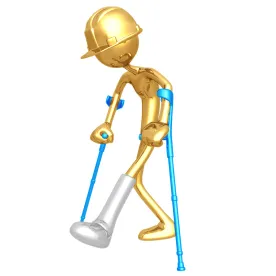The role of the trial technician—sometimes referred to as a courtroom technology specialist, trial consultant, or hot seat operator—is to quickly find and display documents and video, thus enabling seamless presentation by the trial counsel. But good trial technicians do a lot more.
Hot seat operators who are particularly adept are able to meld into the courtroom background when performing these duties. They divert the factfinders’ attention away from the mechanics of the presentation and guide them toward the actual content.
Having spent over 20 years in the courtroom, and having worked on more than 200 trials, I have learned to become the 13th juror—albeit a silent one.
I, too, form opinions about the trial and the verdict outcome. And, having observed more trials than probably anyone in the courtroom except the judge, I have strong foundational knowledge as to how a presentation can be made more persuasive. Below are five techniques that I have consistently seen prove successful in the courtroom.
Successful Courtroom Strategies for Trial Attorneys
1. HOLD FAST TO YOUR THEME
Just like with any good book or movie, a court case must have a theme. The theme is the core message of your client’s case—that is, the most basic position being asserted. It will serve as the overarching lens by which jurors will view your evidence at trial.
ESTABLISH YOUR THEME AT OPENING
Right out of the gate, in the opening statement, you should make this theme known. For instance, “This is a case about a poorly written contract.” In a medical malpractice suit, your theme might be, “Life is unpredictable, even when a doctor goes beyond the call of duty.” In an intellectual property case, “Our product does not infringe their patent.”
VALIDATE YOUR THEME THROUGH WITNESS TESTIMONY
In both direct examination and cross-examination, each witness should be asked questions that tie to and substantiate your theme. For example, if the overarching message is “This is a case about an employer who just didn’t care about employee safety,” you will want to elicit from each witness examples of workplace hazards the employer chose to ignore.
Of course, your theme must be reiterated during closing, so that during deliberation the factfinders will keep it top of mind and use their own powers of reasoning and emotion to consider whether that theme was reinforced by the evidence.
While this advice may sound like mantra from any “Introduction to Trial Advocacy” course, it is remarkable how often I observe attorneys swerve from this basic trial tenet. Litigators sometimes get hung up using a witness to convey a point irrelevant to the theme, but this effort is time ill-spent. Such derailment of juror focus accomplishes nothing, at best, and could potentially sabotage your case.
USE YOUR THEME TO CLARIFY THE COMPLEX
Relaying a clear theme is particularly important in a complex financial action. Figures and data may confuse and overwhelm factfinders, but the theme of the story will stick and help them organize complex information. It also will enable them to quickly set aside insignificant details and instead focus on the facts that support your message.
2. TALK TO THE JURY
This is another elementary trial tenet, but one I see so often ignored: It is the jurors, the ultimate decision-makers in the case, that you need to address. I have seen more than my share of attorneys in high-profile actions arguing their cases to the media sitting in the gallery, which only serves to sour juror interest.
Not only should you communicate your argument to the jury, but the witnesses should do so as well. An astute litigator gently reminds witnesses to address jurors by beginning some questions with, “Please explain to the jury…”
Bear in mind that the jury is communicating, too. Attentiveness to the jurors informs you whether the presentation is effective or if adjustments need to be made.
At which points in the trial are jurors rapidly taking notes? Are heads nodding in agreement? Are heads shaking in disapproval? Are some people falling asleep? All of these actions are important messages that warrant your consideration.
3. KEEP VIDEO DEPOSITION TESTIMONY SHORT AND SWEET
Speaking of jurors sleeping, a good rule of thumb with a remote witness deposition is to display less than fifteen minutes of video footage. Play only the segment that conveys the intended message. Otherwise, jurors will tune out—or worse, become irritated.
Video impeachment should be brisk, tight, and relevant. Playing just those few important sentences that expose the contradiction will make a poignant statement that resounds with jurors. It goes back to the concept of theme. If you stray too far from the purpose of the impeachment, the whole point will get lost.
Even if impeachment video exists, there may be times when you opt to present the transcript instead. Adding your own tone and inflection to the words may help the jury better comprehend your reasons for impeaching the witness.
4. REMEMBER: AN IMAGE IS MIGHTIER THAN THE WORD
ENGAGE JURORS WITH TRIAL GRAPHICS
During my many trials, I have witnessed over and over the potent impact that pictures have on jurors. Pictures have the power to rouse an apathetic jury into one that is engaged. Images often convey the story with more clarity and utility than words ever could.
Consider the effect of describing the shape of a square versus drawing one. Imagine how many words would be needed to describe a person. No matter how lengthy and detailed that description, the listener would only form a vaguely accurate mental image of the actual person.
Visual images are more likely to remain in the viewer’s long-term memory. This tendency is called the Picture Superiority Effect. A reason for people’s superlative ability to recall pictures is that the meaning of visual stimuli manifests more directly than words.
According to Dr. Lynell Burmark, a leader in the education field, it is not that words don’t matter, but they do have more mental sticking power when they are associated with a picture. She said, “The words get Velcroed to the image.”
USE PICTURES TO PREVENT MENTAL FATIGUE
When reading a book or listening to a speaker, an actively engaged person often creates an image in his “mind’s eye,” which then helps the information stick. This task requires additional mental effort, so that after even a short time, the individual tends to “zone out.” Everyone who has been on the receiving end of a long-winded conversationalist knows how tiresome listening can be.
Armed with an arsenal of images, you can quickly and effectively produce the visual stimulation that will captivate rather than fatigue the factfinder.
TAILOR VISUALS FOR SMALLER SCREENS
When faced with conveying an effective message in an online proceeding, images are often the key to getting your point across. In a courtroom, the factfinders all view the images on the same large screen. In a virtual proceeding, jurors are using different types of devices, and some may have small viewing screens.
In order to ensure every juror’s attention is held in a virtual trial, large format images instead of small print should be your visual scheme.
INCLUDE A VARIETY OF MEDIA
Most attorneys have heard about the power of pictures, so what confounds me is how many stellar opportunities for using visuals are lost. For instance, in a case where the time progression of events is important, why does counsel so often neglect to create a visual timeline? A graphic display of the timing of events has great mental sticking power—especially because jurors will continuously refer back to it.
Photos, diagrams, graphs, models, video presentations, and computer animations are all very effective ways to transmit your demonstrative evidence.
Even low tech is good tech for rousing interest in jurors. It is compelling to simply have a witness stand up and draw a picture on a poster board. It adds a human factor to the case that my slick multimedia presentations cannot capture nearly as well. This hand-drawn display can be marked as an exhibit, then used when referring to other witnesses as well as during your closing argument.
5. MIND YOUR MANNERS
The old adage “You catch more flies with honey than with vinegar” is sound advice for an attorney in the courtroom. The jury is absolutely watching every move you make. Therefore, it is very important to treat everyone with the utmost respect—not just judge and jury, but also the paralegals, associates, and court staff.
Additionally, the instruction to “play nice” does not contravene the charge to provide hearty advocacy on behalf of your client. The most effective arguments are those fueled not by ferociousness, but by skill and strong points conveyed in a composed, respectful manner.
An attorney and their client are inextricably tied together, so if the people in the jury box like you, it is highly probable they will also like your client.
Takeaways From 20 Years of Trials
After two decades in the courtroom, I am confident these guidelines will help position you for success—no matter the case or venue.
-
Establish and maintain a strong theme
-
Address and observe the jury
-
Be mindful of video testimony length
-
Captivate the court with effective media
-
Present your case in a manner that conveys respect for all players
A clear theme, combined with skillful communication and powerful visuals, builds a strong foundation and ultimately results in powerful advocacy for your client.




 />i
/>i
